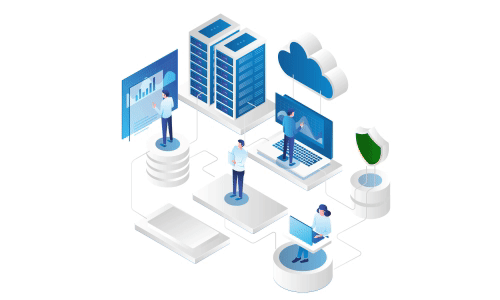In the ever-evolving landscape of cybersecurity, a reactive approach to threats is no longer sufficient. As digital infrastructures grow more complex, so do the security challenges they face. This is where the 'Security by Design' approach comes into play.
'Security by Design' is a proactive approach to cybersecurity that integrates security measures into systems from their inception, rather than as an afterthought. It is a principle that emphasizes the importance of building secure systems right from the design phase.
In this article, we will delve deeper into what 'Security by Design' means and how it works. We will highlight the advantages this approach offers to organizations striving to protect their digital assets. Through real-life examples, we will demonstrate the practical implementation of 'Security by Design' principles, showing how they fortify an organization's cybersecurity posture. So, whether you're a business leader, IT professional, or simply interested in cybersecurity, this guide is a valuable resource for understanding and implementing 'Security by Design'.

What is Security by Design?
'Security by Design' is a proactive approach to cybersecurity that has gained significant traction in recent years. Rather than bolting on security protocols as an afterthought, 'Security by Design' involves embedding security measures into the very fabric of system architecture from the outset. The concept is simple, yet powerful: if systems are designed with security at their core, they will be inherently more robust and less susceptible to breaches.
'Security by Design' aligns with the principle that prevention is better than cure. It posits that security considerations should be front and center at all stages of system design and implementation. This involves considering potential threats and vulnerabilities from the start and designing systems that are resilient against these challenges. The goal is not only to prevent breaches but also to ensure that, if they occur, their impact is minimized, and recovery is swift.
How does Security by Design work?
The implementation of 'Security by Design' principles involves a systematic approach to integrating security into system development. This begins with a clear understanding of the system's purpose, its potential vulnerabilities, and the threats it may face.
Firstly, security requirements are defined in line with the system's functionality and potential threats. These requirements form the foundation of the system's security architecture. By doing this from the outset, security becomes an integral part of the system, rather than an add-on.
Next, threat modeling and risk assessments are conducted. This step allows for the identification and understanding of potential vulnerabilities and risks within the system, informing the design of appropriate security controls.
Subsequently, security measures are designed and built into the system. This could include encryption protocols, secure authentication mechanisms, access controls, and other security features, all designed to address the identified threats and vulnerabilities.
Lastly, continuous monitoring and auditing of the system are carried out to ensure that the security measures remain effective. This includes updating and refining the system's security as threats evolve and new vulnerabilities are discovered.
By systematically integrating security measures from the ground up, 'Security by Design' provides a robust framework for building secure systems. Its proactive approach reduces the likelihood of breaches and minimizes the impact when they occur, making it a crucial element in contemporary cybersecurity.
Advantages of Security by Design
- Proactive Defense: Security by Design encourages a proactive approach to cybersecurity, building defenses against potential threats from the outset rather than reacting to them after they occur.
- Cost-Effective: By anticipating and mitigating security threats early in the design process, Security by Design can save an organization substantial amounts of money in potential breach-related costs.

- Enhanced Trust: Systems built with Security by Design principles are likely to garner greater trust from users and customers, as they demonstrate the organization's commitment to protecting their data.
- Regulatory Compliance: Incorporating security measures from the design phase can simplify the process of meeting regulatory and compliance requirements.
- Reduced Impact of Breaches: Even if a breach occurs, systems built with Security by Design principles are likely to limit the damage and recover more quickly, thanks to in-built safeguards and response mechanisms.
- Continuous Improvement: Security by Design involves continuous monitoring and testing, which helps to identify and address any new vulnerabilities, thus continuously enhancing the system's security.
Real-Life Examples
These examples underscore how leading tech companies are using Security by Design principles to safeguard their products and services from cyber threats, showcasing the practical implementation of this proactive approach to security.
Microsoft's Security Development Lifecycle (SDL)
Microsoft is a prime example of a company that uses Security by Design principles. The company developed its own Security Development Lifecycle (SDL), a software development process that embeds security requirements into every phase of the development process. This approach allows Microsoft to anticipate potential vulnerabilities and take measures to mitigate them before the product is launched. From threat modeling in the design phase to security testing prior to release, Microsoft's SDL is an embodiment of Security by Design and is considered an industry standard for secure software development.
Accredited Microsoft Training Catalogue
Amazon Web Services (AWS)
AWS is another big name that uses Security by Design in their services. AWS enables their customers to architect infrastructures with security embedded from the start. With features like Identity and Access Management (IAM), which ensures secure access control, to AWS Shield, which provides advanced protection against Distributed Denial of Service (DDoS) attacks, AWS demonstrates a proactive approach towards security. AWS's Well-Architected Framework even has a dedicated pillar for Security by Design, helping clients ensure that their workloads on the cloud are designed with optimal security in mind.
Complete AWS Training Catalogue
In summary, 'Security by Design' is more than just a strategy - it's a mindset. It is about viewing security not as a bolt-on feature, but as an integral component of every system, right from the start. It's about recognizing that in the digital world, robust security is not a luxury, but a necessity. By embracing 'Security by Design', we can navigate the digital landscape confidently and securely.
Unleash your potential in Switzerland's thriving tech landscape with our comprehensive IT courses. Whether you're in the bustling streets of Zurich, the innovation hubs of Geneva or Lausanne, or exploring other vibrant tech cities across the country, we offer a wide range of training programs tailored to your learning needs. From programming languages like Python and Java to specialized fields such as data science, cybersecurity, cloud computing, and more, our expert instructors provide hands-on training to equip you with the skills demanded by the industry. Join our community of tech enthusiasts, connect with industry professionals, and embark on a transformative learning journey. With flexible learning options, including virtual classrooms and in-person sessions, we are committed to helping you achieve your goals. Elevate your tech career and thrive in the dynamic world of IT with our high-quality training solutions tailored to the needs of Switzerland's tech scene.